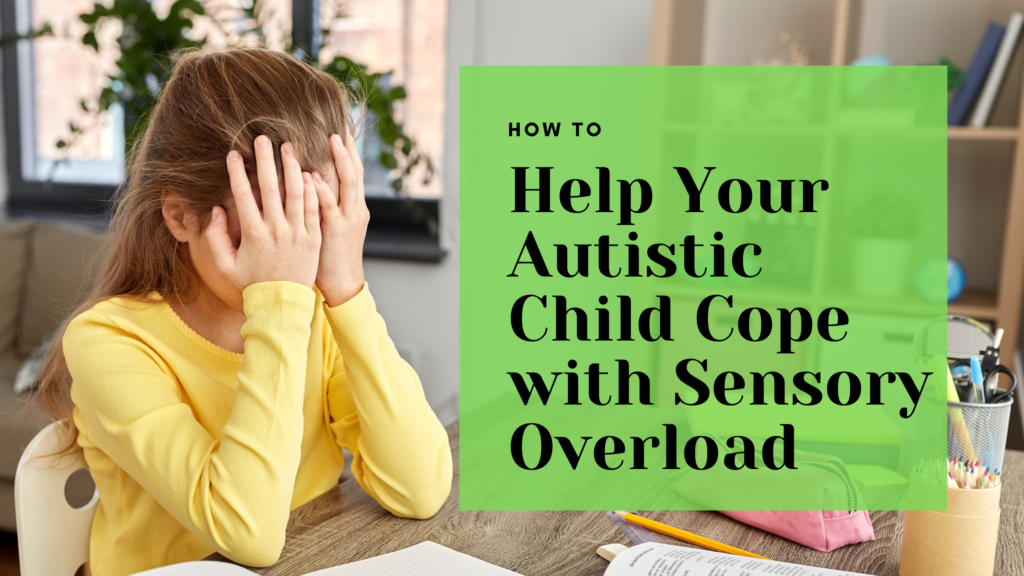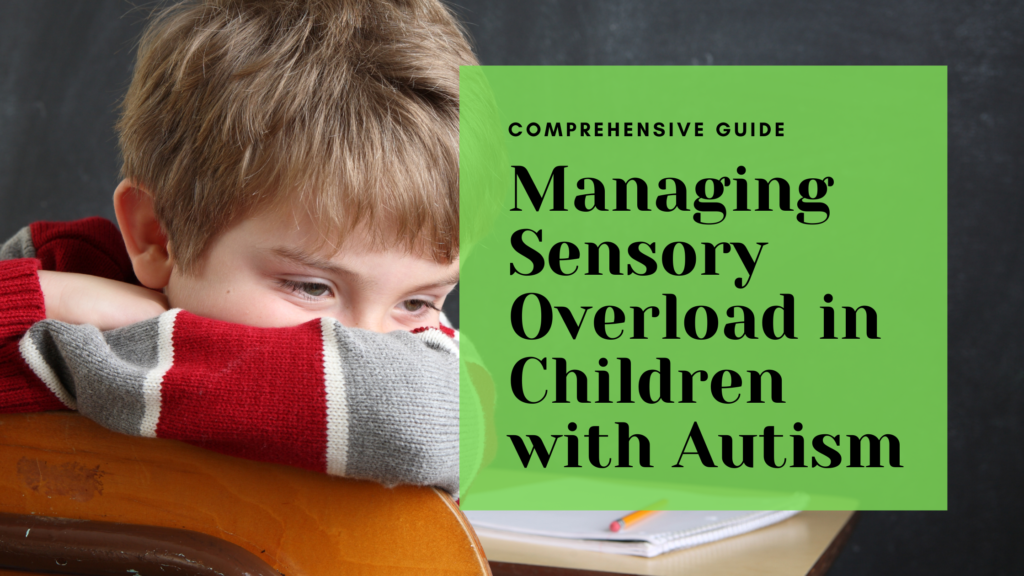I. Introduction
Sensory meltdowns are intense emotional and physical responses to overwhelming sensory input, common in autistic individuals. Unlike temper tantrums, which are goal-oriented behaviors, meltdowns occur when the brain becomes overloaded with sensory stimuli, making it difficult to cope or self-regulate. Understanding the difference between a meltdown and a tantrum is important because meltdowns are not acts of defiance but rather responses to extreme sensory discomfort.
Many autistic people experience sensory processing challenges, where their brains struggle to interpret and react to sensory information like loud sounds, bright lights, or certain textures. When these stimuli become too overwhelming, sensory meltdowns can occur. This article will explore the causes of sensory meltdowns, how to recognize the signs, and strategies for preventing and managing them in various environments.
II. What Causes Sensory Meltdowns in Autism?
Sensory Overload
One of the most common causes of meltdowns is sensory overload. This happens when the brain receives more sensory input than it can process at once. For example, loud noises, bright lights, or strong smells in crowded places can overwhelm an autistic person, causing them to feel stressed, anxious, and overstimulated. The buildup of these stimuli may lead to a meltdown as the brain tries to cope with the sensory onslaught .
Sensory Hypersensitivity
Many autistic individuals are hypersensitive, meaning they react strongly to even small amounts of sensory input. Something as simple as a buzzing fluorescent light or the texture of a fabric can cause discomfort, leading to a sensory meltdown. This extreme sensitivity makes it difficult for them to tolerate environments that others find normal .
Emotional Regulation Difficulties
Autistic individuals often have challenges with emotional regulation, making it harder for them to calm down once they are overstimulated. When sensory overload combines with emotional dysregulation, the result is often a meltdown. The person may feel out of control and unable to self-soothe, leading to intense emotional reactions .
Cumulative Stress
Meltdowns can also be the result of cumulative stress. Throughout the day, an autistic person might experience several small stressors, such as unexpected changes in routine or sensory discomfort. These stressors build up, and even a minor trigger can lead to a meltdown. This cumulative effect shows the importance of managing sensory input throughout the day to prevent overload .
III. Recognizing the Signs of an Impending Sensory Meltdown
Physical Signs
Before a meltdown occurs, there are often physical signs that signal sensory overload is building. These signs can include covering ears, closing eyes, fidgeting, pacing, or other repetitive movements. Recognizing these early signs allows caregivers to intervene before the meltdown reaches its peak .
Behavioral Signs
Behavioral changes, such as withdrawing from social interactions, increased stimming (repetitive behaviors like hand-flapping or rocking), or becoming overly reactive to minor stimuli, are common indicators that a meltdown may be approaching. These behaviors often reflect the individual’s need to manage overwhelming sensory input .
Emotional Signs
Emotionally, an individual may show signs of increased anxiety, frustration, or irritability. These emotional shifts can indicate that the person is struggling to cope with their environment and that a sensory meltdown is imminent .
Pre-Meltdown Phases
There are typically several phases leading up to a sensory meltdown. These include the build-up phase, where stress and sensory discomfort accumulate, and the escalation phase, where the individual’s reactions become more intense. Recognizing these phases can help caregivers intervene early with calming strategies before the meltdown occurs .
IV. Strategies for Preventing Sensory Meltdowns
Create a Sensory-Friendly Environment
One of the best ways to prevent meltdowns is to create a sensory-friendly environment. This can involve reducing sensory triggers like bright lights or loud noises by using dim lighting, noise-cancelling headphones, or soft textures. Ensuring that environments at home, school, and public places are comfortable can help reduce the likelihood of sensory overload .
Use a Sensory Diet
A sensory diet is a personalized plan of sensory activities designed to meet the sensory needs of an autistic individual. Incorporating regular sensory breaks with calming activities throughout the day helps manage sensory input and prevents overload from building up. These breaks might involve using fidget tools, playing with sensory bins, or engaging in movement activities .
Provide Predictability and Routine
Maintaining a predictable routine helps reduce the anxiety that can lead to meltdowns. Autistic individuals often find comfort in structure, so providing a consistent schedule and preparing them for transitions can help prevent meltdowns triggered by unexpected changes .
Recognize Sensory Triggers
It’s important for parents and caregivers to track sensory triggers by observing patterns in behavior and environmental factors. Identifying specific triggers—whether it’s a loud sound or a busy visual environment—allows for adjustments that prevent meltdowns, such as reducing exposure to those triggers or preparing the individual for them .
V. Managing a Sensory Meltdown in the Moment
Stay Calm and Supportive
During a meltdown, it’s essential for caregivers to stay calm and supportive. Using a soft voice and offering reassurance can help de-escalate the situation. Showing frustration or panic can make the meltdown worse, so maintaining a composed and understanding demeanor is key.
Create a Safe Space
Guiding the individual to a safe, quiet space away from overwhelming stimuli can help them calm down. This might be a quiet room or a sensory-friendly area where the person feels secure. Reducing environmental triggers in this safe space allows for faster recovery.
Use Sensory Tools
During a meltdown, sensory tools like weighted blankets, fidget toys, or noise-cancelling headphones can provide comfort. These tools help manage sensory overload by providing calming input or blocking out overwhelming stimuli.
Offer Physical Comfort
If the individual is receptive, offering gentle physical comfort, such as a deep-pressure hug or using a weighted blanket, can help soothe sensory overload. However, it’s important to respect their boundaries and only offer physical contact if it is comforting to them.
Give Time and Space
It’s essential to give the individual time and space to calm down without rushing or forcing interaction. Some autistic individuals need more time to recover from sensory overload, and allowing them to process at their own pace helps them regain control of their emotions.
VI. Sensory Meltdown Recovery Techniques
Use Calming Strategies
After a meltdown, calming strategies like deep breathing, mindfulness, or guided relaxation can help the individual recover. These techniques teach self-regulation skills that can be used to prevent future meltdowns.
Offer a Post-Meltdown Break
After a meltdown, it’s helpful to provide a sensory break with calming activities like listening to soft music, using a weighted blanket, or engaging in a favorite quiet activity. This allows the individual to fully reset before returning to daily tasks.
Discuss the Event When Calm
Once the individual has calmed down, it can be beneficial to discuss the meltdown in a gentle and supportive way. This helps them recognize the triggers and emotional responses involved, promoting better self-awareness.
Reassure and Reconnect
After a meltdown, it’s important to offer emotional support and reassure the individual. Letting them know that they are safe and understood helps rebuild a sense of security, especially if they feel embarrassed or upset about the meltdown.
VII. Sensory Meltdown Strategies for Different Settings
At Home
Creating a sensory-friendly home environment with calming tools like sensory corners, soft lighting, and noise-cancelling headphones can help minimize triggers. Having a dedicated space for sensory breaks ensures that the individual has a place to retreat when overwhelmed.
At School
Teachers can help manage meltdowns in the classroom by offering sensory breaks, providing quiet spaces, and using sensory tools like fidget toys. Allowing students to step away from overwhelming situations can prevent meltdowns before they escalate.
In Public Spaces
Handling meltdowns in public requires preparation. Bringing portable sensory tools like headphones or fidget toys and identifying quiet areas in advance can help manage sensory overload in busy environments.
VIII. Working with Therapists to Manage Sensory Meltdowns
Collaboration with Occupational Therapists
Occupational therapists (OTs) can develop personalized sensory plans tailored to the individual’s sensory needs. These plans often include a sensory diet and strategies for preventing meltdowns, making OTs valuable partners in managing sensory processing issues.
Behavioral Therapy Support
Behavioral therapists can work with autistic individuals to build emotional regulation skills and reduce the frequency of meltdowns. These therapies teach coping mechanisms for managing sensory overload and emotional stress.
Parent and Teacher Involvement
Collaboration between parents, teachers, and therapists is crucial for providing consistent support. Open communication ensures that everyone involved is using the same strategies to manage sensory meltdowns effectively.
IX. Long-Term Strategies for Reducing Sensory Meltdowns
Track Sensory Triggers and Progress
Keeping a log of sensory triggers and tracking progress over time helps caregivers understand what works and what needs adjustment. This also provides insight into patterns that may not be immediately obvious.
Adjust Sensory Diets and Tools
As sensory needs change, it’s important to adjust the sensory diet and tools accordingly. Regular check-ins with an OT can ensure that the strategies remain effective as the individual grows and develops.
Celebrate Small Wins
It’s important to celebrate small victories in reducing the frequency or intensity of meltdowns. Positive reinforcement encourages progress and boosts the individual’s confidence in managing sensory overload.
X. Conclusion
Understanding sensory meltdowns is essential for supporting autistic individuals. By recognizing the signs of sensory overload, creating sensory-friendly environments, and using calming techniques, caregivers can effectively manage meltdowns. Collaboration between parents, teachers, and therapists ensures a consistent and comprehensive approach, helping autistic individuals feel more secure and empowered in managing their sensory experiences.
References:
- Schaaf, R. C., & Benevides, T. W. (2014). The impact of sensory processing difficulties on daily life in children with autism spectrum disorder. Autism Research and Treatment, 2014, 1-11. https://doi.org/10.1155/2014/716870
- Dunn, W. (2001). The sensory profile: assessing the effect of sensory experiences on daily life in children. Occupational Therapy Journal of Research, 21(1), 4-16. https://doi.org/10.1177/153944920102100102
- Miller, L. J., Anzalone, M. E., Lane, S. J., Cermak, S. A., & Osten, E. T. (2007). Concept evolution in sensory integration: a proposed nosology for diagnosis. American Journal of Occupational Therapy, 61(2), 135-140. https://doi.org/10.5014/ajot.61.2.135
- National Autistic Society. (2020). Sensory differences. Retrieved from https://www.autism.org.uk/


